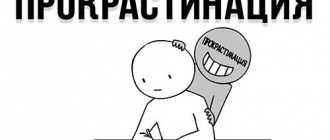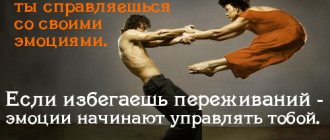Breathe slowly
How to get rid of panic attacks? Slow breathing helps to cope with a rapid heartbeat and shallow breathing, which are both symptoms of a panic attack and its provocateurs. By breathing slowly, you send a signal to your brain to calm down. This is one of the most effective physiological ways to stop a panic attack.
Focus on your breathing. Inhale for one-two-three-four, hold your breath for one second, exhale for one-two-three-four. Look at your stomach (even through clothes): how it inflates as you inhale and retracts as you exhale.
Diagnostics
When diagnosing panic attacks, the presence of somatic diseases related to the thyroid gland, heart and respiratory diseases, and neurological problems is first excluded. The patient is also examined by a psychotherapist for the development of depression, bipolar disorder and psychopathy of various forms. The final diagnosis is made by a psychotherapist after excluding common diseases and mental disorders.
In a number of somatic and mental illnesses, symptoms reminiscent of panic attacks develop. Thus, with bronchial asthma, the patient suffers from suffocation during attacks, but during a panic attack there is no difficulty in exhaling, and wheezing characteristic of asthma is not observed.
With hypertension, attacks of fear develop when crises threaten, but they are always preceded by an increase in pressure. With panic attacks, blood pressure rises during the attack.
The difference between a panic attack and angina pectoris is that pain in the heart during an attack is not relieved by medications for heart pain, the level of markers of myocardial necrosis is within normal limits, and the pain goes away when attention is switched.
After diagnostic examinations, and if somatic causes are excluded, you can begin treatment for the independent disease “panic disorder.”
Admit you are having a panic attack
How to understand that you are having a panic attack and get rid of it? During a panic attack, a person catastrophizes what is happening: it seems that it is a heart attack, stroke, death, madness, that you are fainting or about to vomit.
Tell yourself mentally several times: “This is not a disaster, this is a panic attack.” The intensity of your symptoms will decrease and you will begin to regain consciousness.
Beck Scale: Test for Anxiety
Signs
A panic attack as an attack manifests itself as unexpected and unreasonable attacks of fear. Fear grows very quickly. With periodic repetition of panic attacks, anxiety can be intensified by the constant fear of the attack itself.
During an attack, the heart rhythm is disturbed and tachycardia occurs, pain can radiate to the left arm, there is a feeling of constriction in the throat, discomfort in the chest, difficulty breathing, trembling in the body, nausea, dizziness to the point of fainting, loss of reality and fear of death. Panic attacks are accompanied by an increase in blood pressure or its sudden jumps.
Impaired breathing is the main symptom and catalyst of a panic attack. The feeling of lack of air and hyperventilation of the lungs provokes an intensification of the attack of fear, the person cannot breathe normally, suffocation occurs and the fear of death intensifies.
Also, during a panic attack, there may be tinnitus, stuffy ears, and the person may scream and cry loudly.
The duration of the attack is up to half an hour, rarely the attack can last longer. Attacks can occur once a month, or several times a week.
Doctors talk about panic attacks with varying degrees of intensity of anxiety and fear. This can be either a pronounced state of panic or internal tension for no reason, accompanied by anxiety. In this case, they talk about a “non-insurance” panic attack, while there are vegetative somatic symptoms here, and they are quite pronounced.
Despite the fact that panic attacks occur without justification, they often occur in a catalyzing situation (closed space, crowded transport).
Train your mindfulness
Mindfulness is the ability to notice what is happening in and around you.
Panic attacks often lead to a feeling of unreality, out-of-body, detachment from one's own body and from the world. Mindfulness helps cope with a panic attack and the first signs of its approach.
How to deal with panic attacks? Focus on your body, look at it or imagine with your eyes closed: how your feet touch the floor, how your clothes touch your skin, mentally move to the tips of your fingers.
To distract yourself, you can focus your gaze on familiar objects around you - a glass with pens and pencils, a plant on the window, a pattern on the wall or on the floor, and so on.
Treatment
Psychological and medical treatments and medications are used to treat panic disorders.
Good results are achieved by cognitive behavioral therapy in combination with the use of antidepressants - selective serotonin reuptake inhibitors. In most cases, psychotherapy alone will be sufficient.
When treating with medications, it is important to know that these drugs have a cumulative effect, and improvement may not occur earlier than a month from the start of treatment. The course of treatment with antidepressants can last up to one year. The dosage of use is reduced gradually.
Cognitive therapy methods
Cognitive therapy uses various methods for mastering anxious thoughts. One of them is “cognitive decoupling.” When using it, the patient realizes that the thought of death and other disturbing thoughts may be erroneous.
The effect of this method is due to the fact that the amygdala of the brain, which is associated with the occurrence of panic, reacts to thoughts as a justified reason for fear, so panic arises for no reason. With “cognitive splitting,” the patient learns to control his thoughts and convince himself that what is happening to him has no reason to panic.
Another effective method of cognitive therapy is the method of “conscious self-observation” of your thoughts and feelings. When using it, the patient learns to observe his thoughts and feelings, simply noting anxiety without trying to overcome it.
Patients are advised to prepare a positive statement in advance that will reassure them during an attack (“it will pass,” “I’m safe,” “I can handle it”).
It is important to learn to stop disturbing obsessive thoughts, be distracted by something pleasant, and say “stop” to negative thoughts. Physical exercise is good for relieving panic; it reduces muscle tension and reduces the activity of the central nucleus of the amygdala. It is also useful to practice diaphragmatic breathing, which will help restore the nervous system and relieve anxiety. Diaphragmatic breathing activates the parasympathetic nervous system and relaxes the body.
Stop the attack with medication
Drugs from the group of tranquilizers (anxiolytics or anti-anxiety drugs) help stop a panic attack if you take the pill at a time when it is still in its infancy.
Tranquilizers cannot be taken by everyone; they are sold by prescription, so they must be prescribed by a psychiatrist or psychotherapist.
Panic attacks. Why don't pills help?
Causes
Psychologists believe that the causes of panic attacks are purely psychological phenomena. They rely only on a person’s mental state, forgetting that the psyche only reacts to negative changes in the body, and do not take physiology into account at all. In their opinion, anxiety occurs in the following cases:
- chronic stress;
- unstable psycho-emotional state due to moral trauma suffered in childhood;
- high sensitivity of the nervous system to external stimuli, which is why a person is in constant internal discomfort;
- the presence of intractable or very complex problems;
- excessive demands on oneself and one’s achievements;
- depression, which is associated with the loss of loved ones, work;
- mental illness.
There is a version that anxiety is a consequence of external causes that negatively affect the state of the body:
- genetic predisposition;
- poor serotonin production;
- frequent overwork and lack of sleep;
- excessive physical and mental stress;
- surgical interventions in the body;
- pregnancy period;
- drinking large amounts of alcohol;
- taking strong medications, including hormonal ones.
A person may feel panic attacks due to heart failure, various heart diseases, or after a stroke.
It has been proven that panic attacks occur due to insufficient oxygen supply to the brain. But there must be a reason for this, because oxygen deficiency does not occur on its own. Oxygen does not reach the brain due to poor circulation. The root cause is most often cervical osteochondrosis, in which the cervical vertebrae are displaced and compress the artery, not allowing blood to pass freely in the required quantity.
Cervical osteochondrosis is the main cause of panic attacks
Doctors can name many factors that provoke anxiety. But the most easily explained physiological reason is instability of the cervical spine. Dr. Shishonin says that it is present in 99.9% of cases when a person has panic attack syndrome.
The disease itself causes a number of unpleasant symptoms, including a feeling of panic. With this disease, the vertebra becomes compressed and displaces the artery. Blood flow is disrupted. And after a person lies down due to poor health, the neck relaxes, the vertebrae returns to its place, blood circulation becomes normal, and anxiety subsides. But many do not know how this mechanism works, and are tormented by the thought that something is wrong with them.
If a person does not treat his neck or do an examination, he cannot know for certain why he has such a problem. Over time, the brain “gets used to” the periodic lack of oxygen and is on “combat readiness.” This causes psychological problems in a person, which also need to be dealt with. Therefore, of course, when treating the syndrome, one should not discount psychological factors. But it should be remembered that they are only a reaction to what is happening, and not the root cause.
Breathing exercises
“When we are nervous, our breathing quickens. Oxygen levels increase and carbon dioxide levels decrease. This condition disrupts the ideal picture of the acid-base balance in the blood and is called respiratory alkalosis. This is why in stressful situations we experience irritability, nausea, anxiety, and muscle twitching.”
Elena Alekseevna Shchedrina
Endocrinologist at the European Medical Center Expert Clinics, doctor of anti-aging medicine.
Experience: 14 years
Accordingly, in order to bring the pH level back to normal, it is necessary to slow down your breathing. It sounds quite simple, but in reality it causes a lot of difficulties. In order not to let yourself be driven into a corner in difficult times, we will list several breathing techniques that work, thanks to which you can control your emotional state.
1. “4-7-8 breathing.”
Harvard University integrative medicine physician Andrew Weil called the technique “a natural tranquilizer for the nervous system that brings the body into a state of calm and balance.”
It is better to perform the exercise while sitting with a straight back on a soft bed. Press the tip of your tongue to the roof of your mouth and take a full breath through your mouth. Then close your mouth and inhale slowly through your nose for 4 counts. Hold your breath for a count of 7 and exhale through your mouth for 8 counts. Repeat the entire circle at least 4 times.
2. Compressed lip breathing.
Relax any parts of your body where you feel tension, especially your neck and shoulders. Next, counting to two, inhale slowly through your nose, while keeping your mouth closed. Then purse your lips as if you want to blow out the candles, and in this position, exhale air through them in four counts.
3. Breathing 7:11.
This technique was developed by American scientists when they studied the mechanisms of development of panic attacks. They discovered an interesting fact: at rest, the proportion of inhalation and exhalation is 7:11.
To lower your heart rate, normalize your blood pressure, and turn on your parasympathetic system, take a deep breath in through your nose for 7 counts, and then exhale completely for 11 counts. It is important to breathe slowly, deeply and for at least 5 minutes. As you inhale, it is important to stretch your stomach, and as you inhale, to pull it in.
4. Breathing + stretching.
Exercise will help relieve muscle spasms, relax muscles, and bring feelings back to normal. Sit on the floor, spread your legs as wide as possible, and raise your arms straight up. Inhale and begin to lower your body and arms down, slowly counting to 8. Inhale for 2 counts and return to the starting position. Repeat at least 10 times.
Online training in Anti-Age medicine Learn the intricacies of anti-aging medicine from anywhere in the world.
For the convenience of doctors, we have created the Anti-Age Expert online training platform: Lectures from our educational programs are consistently posted here, and are accessible 24/7. Doctors can study the materials as many times as necessary, ask questions and discuss interesting clinical cases with colleagues in special chats. Find out more
How else can you activate the parasympathetic system?
· Meditation.
Scientifically speaking, meditation is a mental action aimed at bringing the psyche into a state of deep concentration. Many scientists have long viewed meditation critically, but now there is evidence that it increases the parts of the brain responsible for the production of the happy hormone dopamine. In addition, correctly performed practices allow you to slow down, release tension in the body, and reduce the level of anxiety and anxiety.
· Yoga.
There are countless types of yoga. Among others is Sudarshan Kriya Yoga, which is considered especially useful for relieving anxiety, stress, and insomnia. To experience its effect for yourself, try this exercise for a few minutes:
- Turn on your favorite relaxing music (the sounds of the sea or the sound of the wind may be suitable)
- Close one nostril with your thumb.
- Inhale slowly through the second nostril for 5 seconds.
- Release the first nostril, close the second and exhale slowly.
Repeat for at least 7-10 rounds.
· Massage of active biological points:
- between the eyebrows;
- on the wrist;
- in the hollow between the index finger and thumb.
What is breathing like?
Before talking about execution techniques, let's understand a little about the types of breathing itself. It happens:
· Top.
In this case, the diaphragm is practically not strained, and breathing is carried out through the upper part of the chest.
· Average
This is when air enters due to the expansion of the middle part of the chest, and the diaphragm moves down slightly.
· Nizhny.
The diaphragm is lowered as much as possible, the abdominal muscles are relaxed.
· Full.
It involves maximizing the filling of the lungs with air by combining all the techniques listed above.
· Reverse.
This is the tension of the abdominal muscles when inhaling, the lowering of the diaphragm.
· Delayed.
There is a pause between inhalation and exhalation. Often used in yoga, since the founders of the teaching implied that the body is filled with energy while holding the breath.











